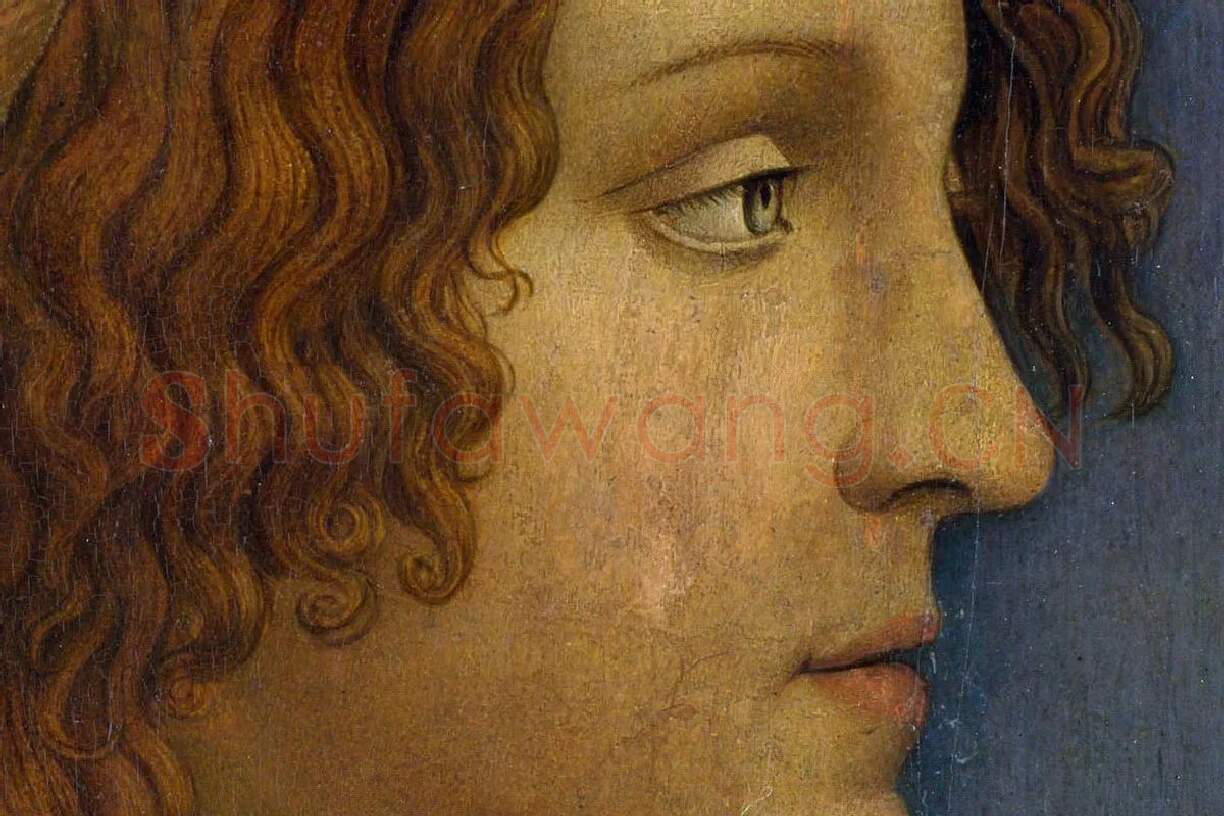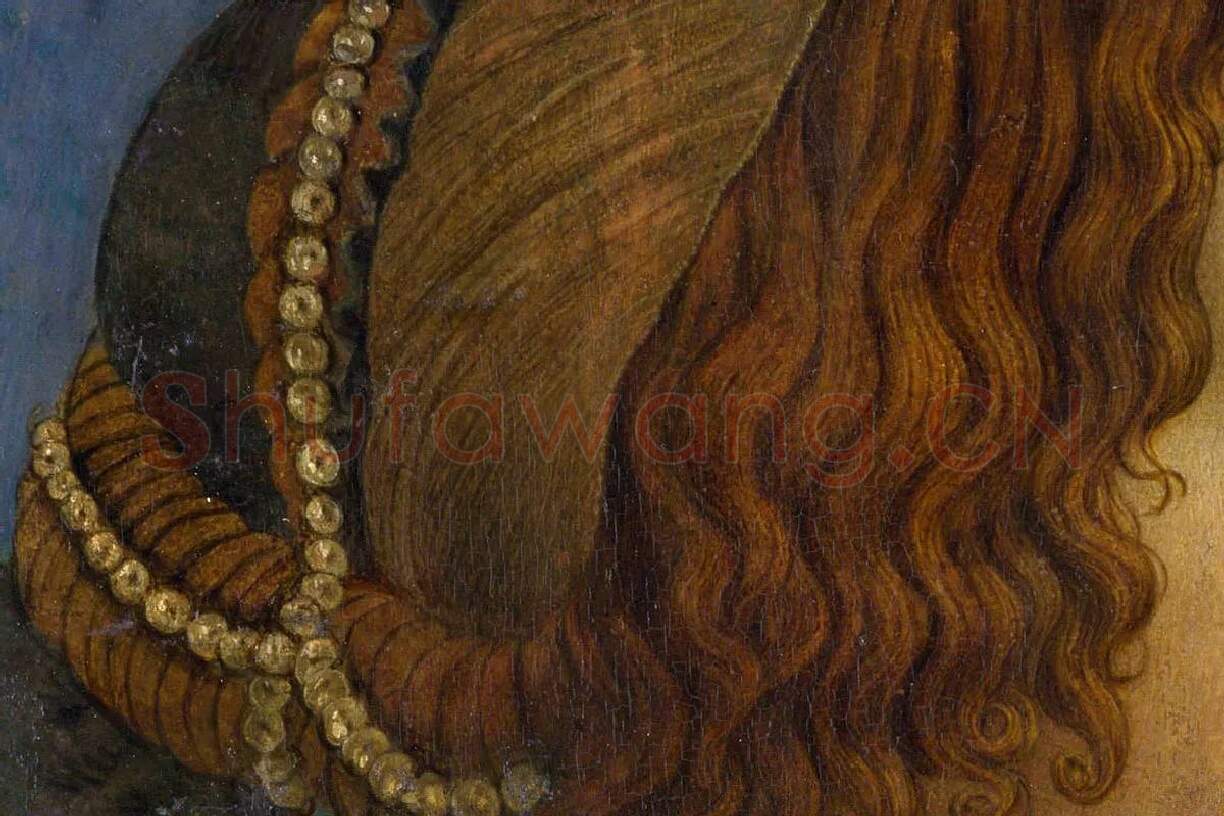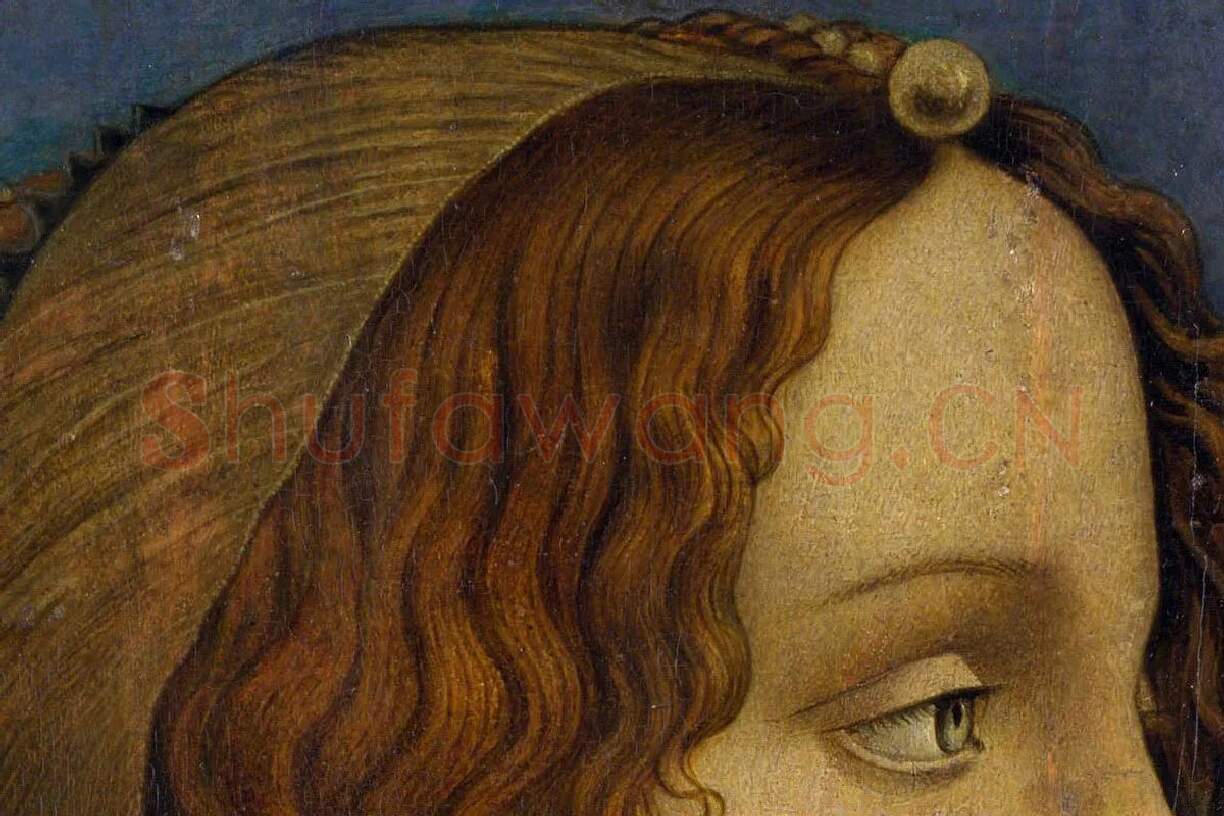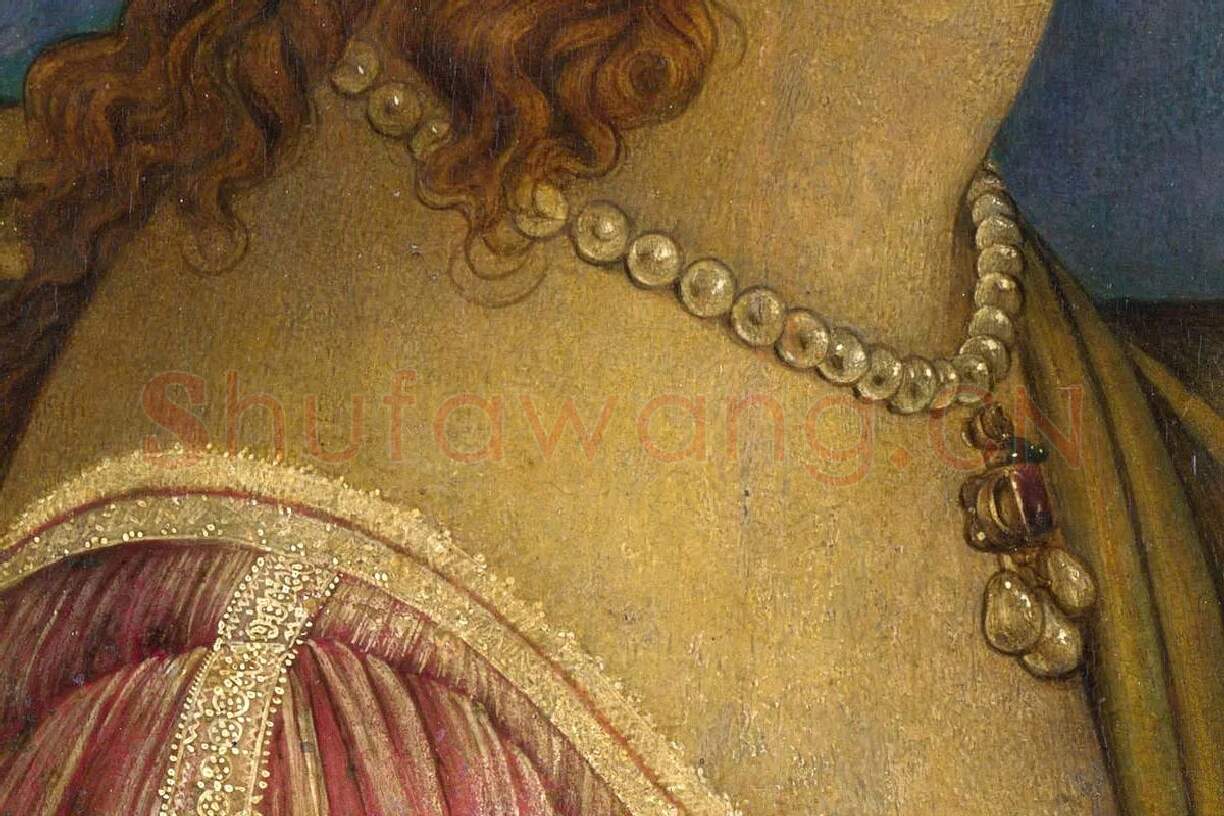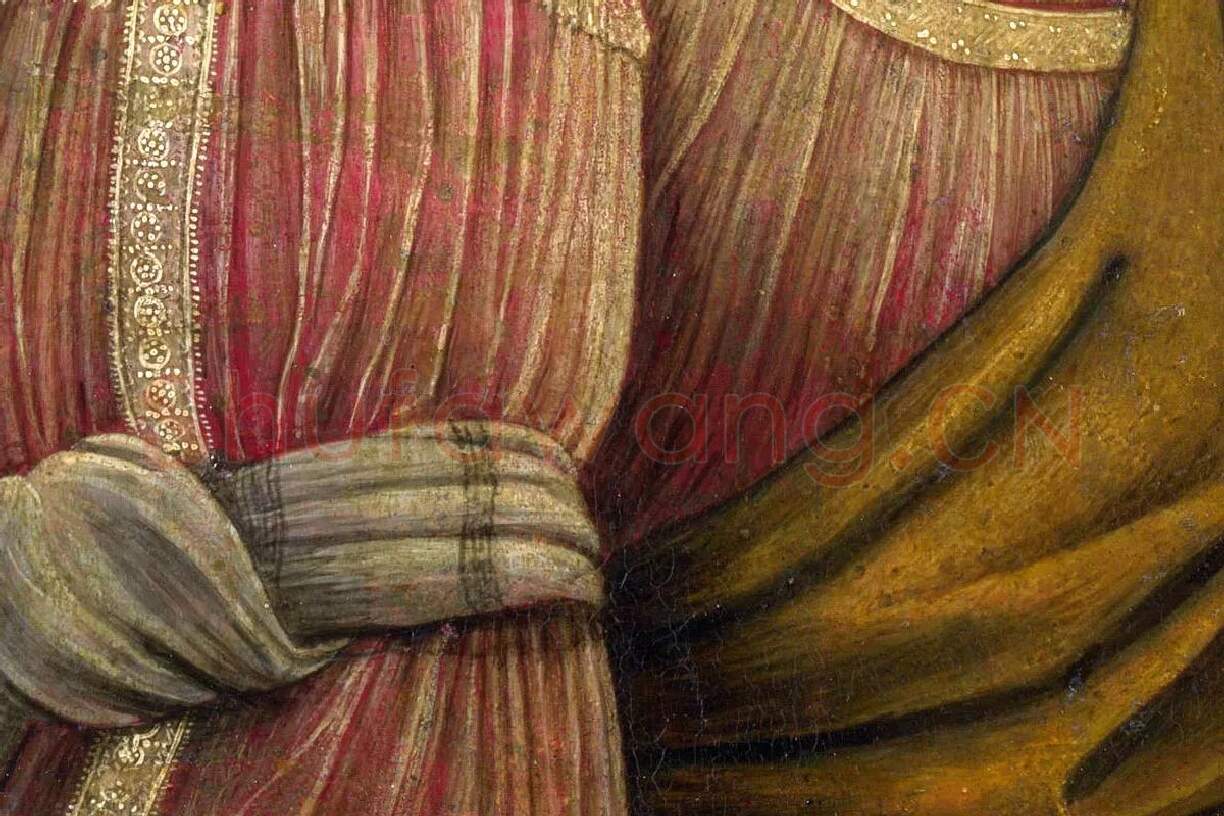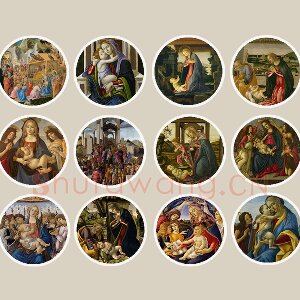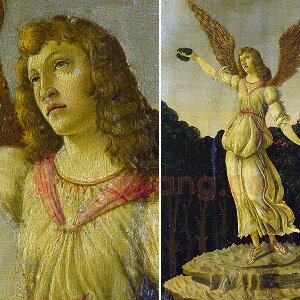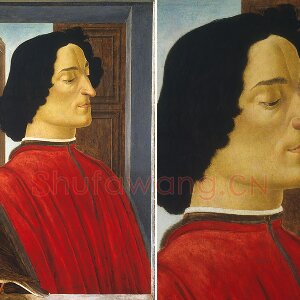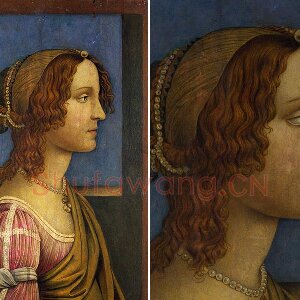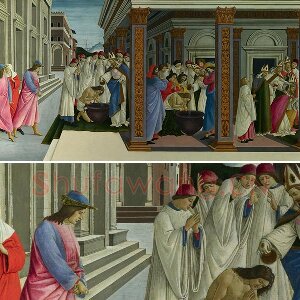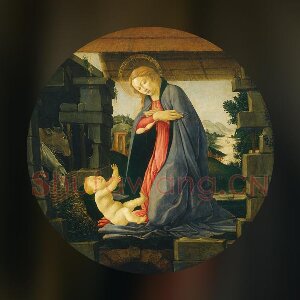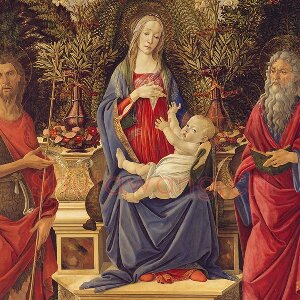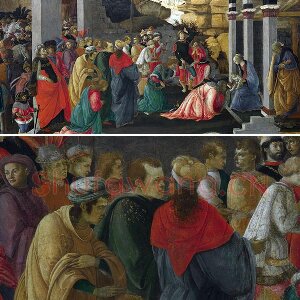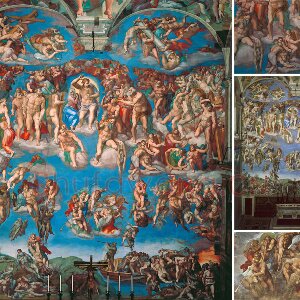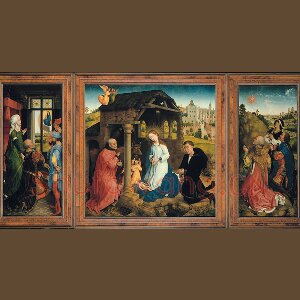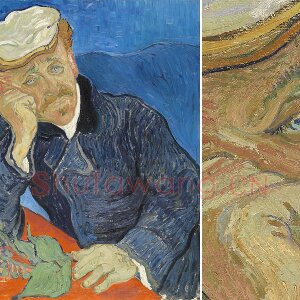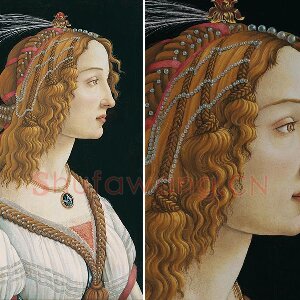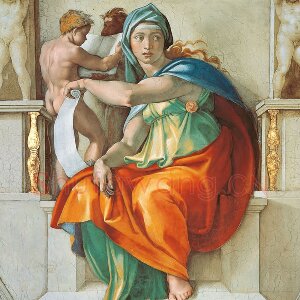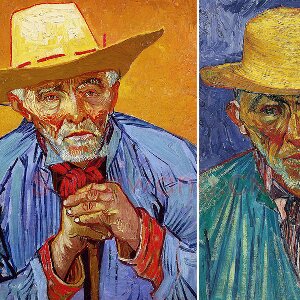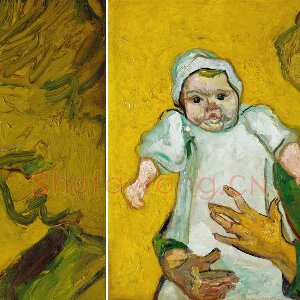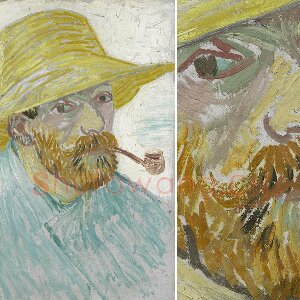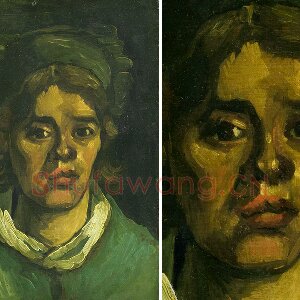作品名称:侧面女士肖像
作品作者:波提切利(Sandro Botticelli)
作品分类:油画
作品别名:A Lady in Profile
原图像素:2825×4226像素(300 DPI)
文件大小:6.87 MB
文件格式:jpg/tif
作品材质:板面蛋彩画
备注说明:波提切利,文艺复兴,肖像画,佛罗伦萨画派,女人,人物
作品全图欣赏

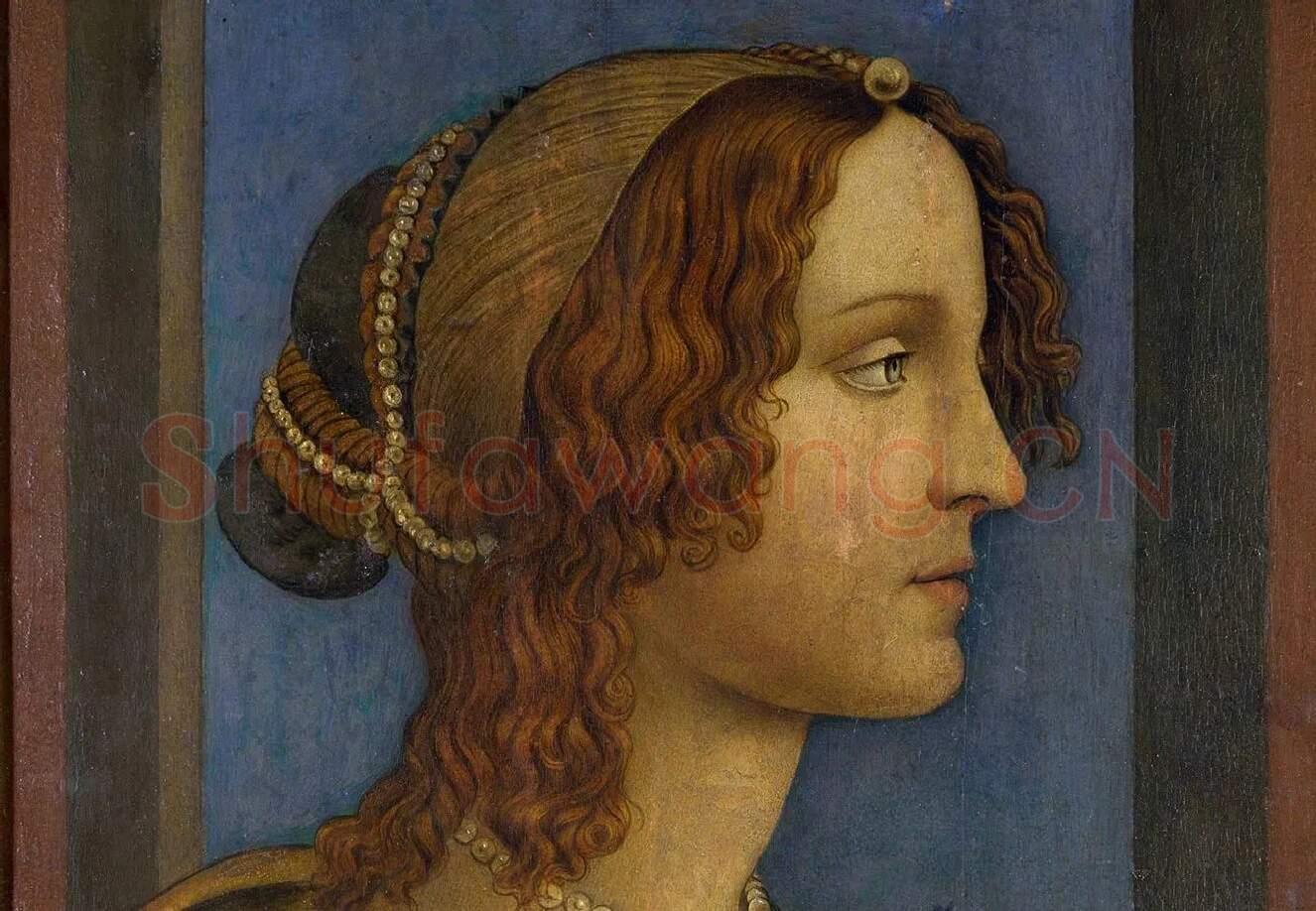



作品简介
这幅画的反面还有一幅《天使》的画像。她展示了一个长着翅膀的人站在一个基座上。我们不知道这个一幅画的含义,但它很可能象征着这个女人的道德品质。
作品概述
The profile view, as depicted here, was for a long time the most popular way of showing someone in a portrait. By the time this was painted it had fallen out of fashion for men but not for women. This may be because it was seen as a more modest and less assertive pose.
This picture is not by Botticelli himself, but it resembles two of his pictures which show women in profile with elaborate hairstyles threaded through with jewels. These sumptuous details make it unlikely that these pictures were actual portraits: local laws about dress would not have allowed such luxurious ornaments and glamorous hairstyles. Portraits of this type are probably supposed to represent ideally beautiful women.
In fifteenth-century Florence the benchmark for the ideal woman came from the descriptions of a fourteenth-century Italian poet, Petrarch: golden ringlets, pale skin and rosy lips. The Medici, the ruling family in Florence, have often been associated with these images of blonde women with long curls, partly because of a poem written by poet Angelo Poliziano, the tutor of the Medici children. In it he describes the object of Giuliano de‘ Medici’s affection, Simonetta Vespucci (whom he admired – platonically – for her beauty and virtue, although she was married to another man), as embodying all the qualities of ideal beauty.
Simonetta was admired for her character as well as her looks; in Renaissance thought the one mirrored the other. Painted portraits sometimes followed the format of portrait medals and had paintings on their reverses. Like modern-day coins, the reverse of portrait medals featured plant or animal motifs, and these told a story when deciphered. In the case of portrait medals of women, commissioned only by the most privileged and wealthy in society, the reverse would be cast with symbols that praised virtues like modesty and chastity. The reverse of this portrait is painted with a number of mysterious symbols: a winged figure stands at the top of a rocky crag carrying an astrolabe (an astronomical instrument) in one hand and a clump of moss or grass in the other. We don’t know what these symbols refer to but it is most likely that they are intended to reflect the woman’s good character.
Botticelli and his workshop produced numerous pictures of this kind as did his contemporaries working in Florence including Antonio and Piero Pollaiuolo and the workshop of Verrocchio.
作品大图局部
